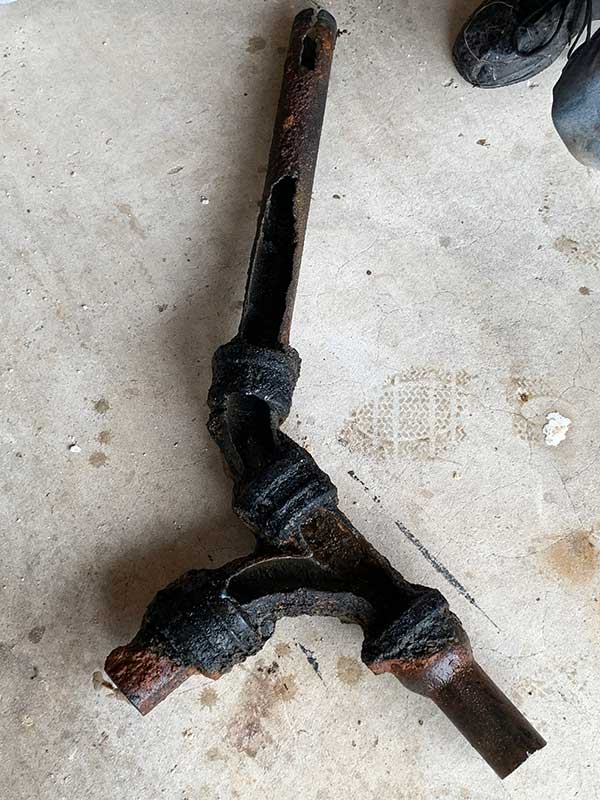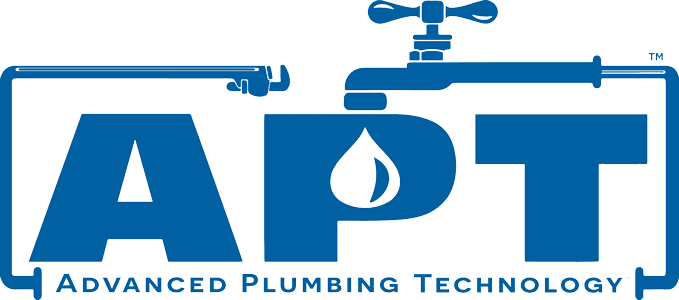What is Trenchless Pipe Repair?
Trenchless pipe repair, trenchless sewer pipe replacement or trenchless pipe lining as it's commonly referred to is an innovative method used for fixing and replacing damaged pipes without causing significant disruption to the ground above. As the name suggests, it avoids the need for extensive trench digging, a traditional approach that can be time-consuming, costly, and damaging to landscapes or structures. Instead, it uses technology and specialized equipment to diagnose and repair pipes with minimal excavation, often only needing access points at either end of the pipeline.
So, how does it work, what are its advantages, and when should you consider this repair method? Let's dive in to find out.
How Trenchless Pipe Repair Works
Trenchless pipe repair usually involves one of two methods: pipe relining or pipe bursting.
- Pipe Relining: Also known as Cured-in-Place Pipe (CIPP) lining, pipe relining involves inserting a flexible, resin-coated tube into the damaged pipe. Hot water or steam is then used to cure the resin, hardening the tube and forming a new pipe within the old one. This process can effectively seal off any cracks or leaks, resulting in a new, durable pipe.
- Pipe Bursting: This method is often used when the damaged pipe needs replacement. A bursting head, which is larger than the existing pipe, is pulled through, effectively breaking the old pipe apart while simultaneously pulling in a new one
The Advantages of Trenchless Pipe Repair
The benefits of using trenchless pipe repair methods over traditional ones are numerous:
- Less Disruptive: As trenchless repair does not require extensive digging, landscapes, driveways, sidewalks, and structures remain undisturbed. This benefit alone can save homeowners and businesses significant disruption and restoration costs.
- Cost-Effective: Trenchless pipe lining is substantially more cost-effective than traditional pipe repair or replacement methods. It requires less labor, less equipment, and less time, thereby reducing the overall cost. Not to mention less destructive to your home and landscaping.
- Faster: Since there's no need for heavy excavation, repairs can be completed in a fraction of the time it would take for traditional methods.
- Durable: The materials used in trenchless repair are highly durable, often providing a longer-lasting solution than traditional pipe materials.
- Environmentally Friendly: With less excavation, there's minimal disturbance to ecosystems and habitats around the repair site, making trenchless repair a more environmentally friendly option.
The Process of Trenchless Pipe Repair
The trenchless pipe repair process may seem complex, but skilled professionals have honed their techniques to offer quick and effective solutions. The process is the same whether it is cast iron pipe repair or any other form of pipe lining. Here's a brief look at the process:
Inspection: First, a high-definition camera is used to inspect the pipe's interior and assess the damage. This step helps to locate the problem and devise the most efficient solution.
Cleaning: The pipe is then thoroughly cleaned using high-pressure water jets or mechanical cutters to remove blockages or debris. This step ensures that the new pipe or lining adheres well and fits properly.
Repair/Replacement: Based on the inspection and damage assessment, the appropriate trenchless method (pipe lining or pipe bursting) is used to repair or replace the damaged pipe.
Final Inspection: A final camera inspection ensures the repair is done correctly, verifying the new pipe's alignment and integrity.
Free Video Inspection
If your home was built before 1975 we offer a free video inspection, so you can see the current state of your cast iron system.
Other Considerations for Trenchless Pipe Lining
Limitations of Trenchless Pipe Lining
 While trenchless pipe repair is a powerful tool, it may not be suitable for all situations. For instance, it may not be the best solution for pipes with severe joint misalignment or collapsed pipes that lack structural integrity. Additionally, local codes and regulations can sometimes limit the use of trenchless methods. Sometimes a true sewer pipe replacement solution may be necessary. Therefore, professional consultation and assessment are critical.
While trenchless pipe repair is a powerful tool, it may not be suitable for all situations. For instance, it may not be the best solution for pipes with severe joint misalignment or collapsed pipes that lack structural integrity. Additionally, local codes and regulations can sometimes limit the use of trenchless methods. Sometimes a true sewer pipe replacement solution may be necessary. Therefore, professional consultation and assessment are critical.
Caring for Your Pipes Post-Repair
After trenchless pipe repair, homeowners should prioritize maintaining their pipes. Regular inspections can help detect minor issues before they become significant problems. Also, be mindful of what goes down the drain; avoid flushing or draining materials that may clog or damage your pipes.
When to Consider Trenchless Pipe Repair
Trenchless pipe lining is an excellent option if you're looking to avoid unnecessary excavation and disruption. It suits various pipe issues, including leaks, cracks, corrosion, and root intrusion. Whether it's sewer pipes, water lines, or gas pipes, trenchless repair can be an efficient, cost-effective solution.
However, it's crucial to consult with a professional plumber or pipe repair company to assess the condition of your pipes. They can provide expert advice on the most appropriate repair method based on the type, location, and extent of the damage.
In conclusion, trenchless pipe repair is a groundbreaking method offering significant benefits over traditional methods. It's less invasive, more cost-effective, faster, and environmentally friendly, making it a viable option for many pipe repair and replacement needs. Remember, an informed decision is always the best approach. Contact your local plumbing professionals at Advanced Plumbing Technology for advice tailored to your unique situation. They can be reached any time by calling 866-SEWERFIX or by clicking here.
See What Our Residential Clients Say About Us

Ginny WalkerAPT did slip lining on all our cast iron sewer pipes. We were completely satisfied with the work that was performed. Hannah, the foreman on the job was very professional and conscious. She took pride in her work and her crew. The crew did a fabulous job, cleaned up each night and were very polite and respectful. Everything was explained to us during the process. They said it would be a two day job and they were right on target. I would definitely recommend this team.

Samuel RosarioThis company is:very professional and has a great team of people who have experience in what they do and it shows. This it the first time I used them for this job pipe lining.It is new to me but I trusted them.
GREAT JOB AND THANKS ALOT FOR YOUR SERVICE

Paula DuncanI would like to give a huge shout out to Tony D. and his team at APT, Advanced Plumbing Technology! He and his team of professionals, came to my home and without judgment, assessed The water damage to my home due to faulty cast-iron pipes. His team did not miss a beat by checking every square footage of Pipes, on the roof, within the walls, bathroom room, kitchen, and laundry room. During the process Tony sat down with me at my kitchen table and explained how it all would work. It was a bit overwhelming but he put me at ease. Highly recommend this company for your future pipe needs and plumbing repairs, assessment of damage. 😊

Alexander DeveneyAPT was extremely professional. They have an abundance of knowledge and were able to diagnose my issues in a timely manner. My representative Brett was able to assist and guide me through the process. APT is one of the main reasons I was able to win my case against my home owners insurance. I couldn’t be more pleased with their staff and representatives. 10/10 would recommend to anyone in need.

Jacob TanisTony has been great dealing with my issue I have been having. He is a very professional personable person.

Desiree MontagnaAPT made the process super easy. I needed to get my supply line and drain pipes fixed. They made me feel at ease with such a big job. They kept me in the loop at every step. Through paper work, scheduling, permits, during the job, going over final paperwork with me, they made sure I understood the process. They took a stressful process and made it manageable.
The plumbing has never worked better. We noticed a difference the first time we used it. Our shower always backed up. The first time we used the shower after the job it was draining the correct way. Everything the touched had amazing results.

Lisa MarieI’m so thankful for Brett, Tony & all the hard workers at APT. They did everything in their power to meet our needs. They went over & beyond. Everything is working so much better. God bless and Jesus loves you!

Sunkissed ChocolateThe representative that was sent to my home, I believe his name was Tony and also a gentleman name David, were so helpful during my plumbing crisis. They were very knowledgeable about the work and repairs that were required to make my house a home again.

Ayana SmithI worked with APT regarding a repipe matter. Due to my work schedule, it was difficult for me to meet with them so they actually came to my office and explained what the job would entail. When they came to my home, they were very detailed, prompt, professional and made the entire process as stress free as possible. I am thankful for their services and highly recommend them should you need a repiping service.

NessaAPT had to come to my house to do an inspection. They were here for 2 1/2 hours, were very thorough, and did an excellent job! They were very kind and I was very impressed. Great job APT!! Thank you 🙂

Deb HenryThe team showed up a bit early. We had lost power and they graciously offered use of their generator. They protected the flooring worked steadily and cleaned up each day.

Carlene ReddickAPT company was pleasant to work with. They were very accessible and stay in contact with us to follow up on the processes that needed to proceed forward on the project. We worked very closely with Tony Diana and he was well knowledgeable and very informative. He did not hesitate to answer our questions and did make us feel comfortable in making all of our decisions. I would definitely recommend Applied Technology plumbing and would most likely use them in the future for our plumbing projects.
